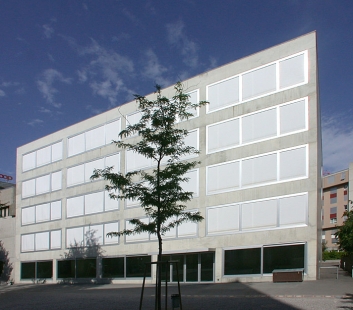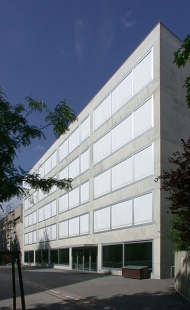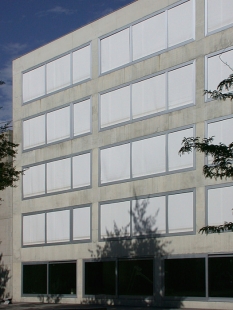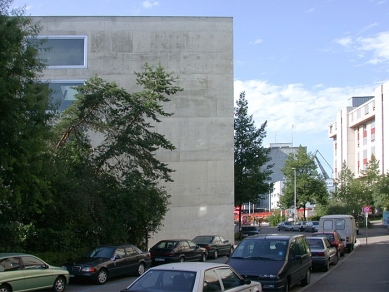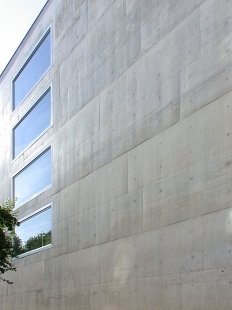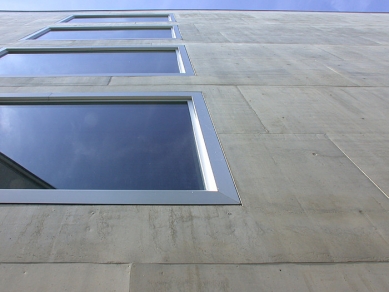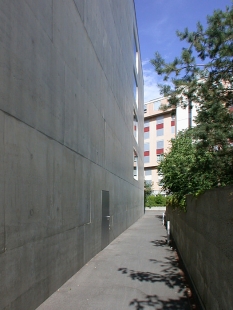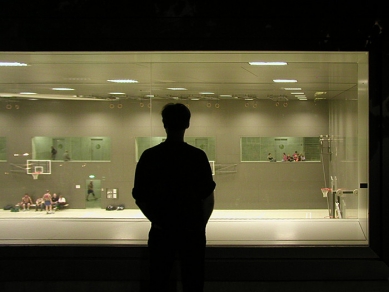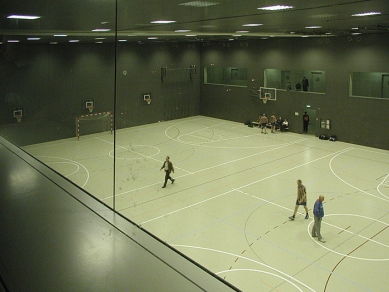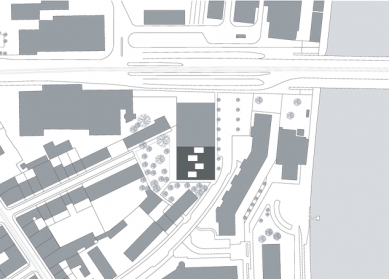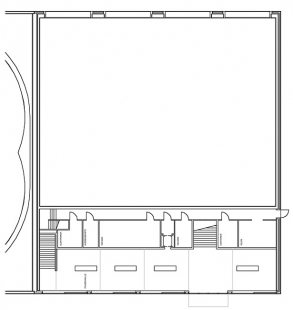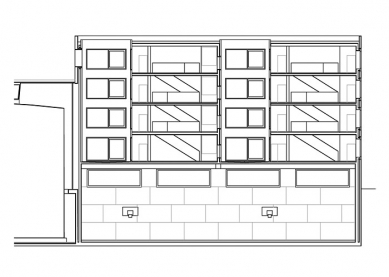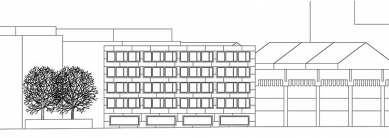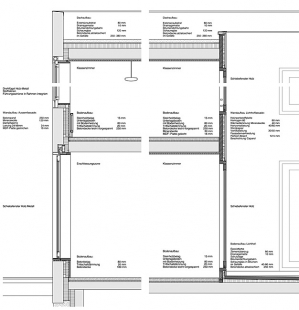
Elementary School Volta
Primary Level Volta

The St. Johann district in Basel is a place where various scales clash tension-filled. In direct proximity, there are residential buildings on one side and the vast industrial area of Novartis, the northern bypass, and the St. Johann harbor on the other; and between these two poles, mercilessly interrupting a block-edge development, lies the massive volume of a former coal storage hall, which has housed oil tanks for the neighboring district heating power plant since the 1960s.
As a result of the Basel school reform and the strong influx of newcomers that has been observed in this district in recent years, new school space was urgently needed here. In 1996, the canton of Basel-Stadt announced a project competition for a school building with twelve classrooms, the associated specialized rooms, and a double gymnasium.
The realized project does not represent an attempt to carry out urban repair, but rather highlights the break that runs through the urban structure at this point. With great sensitivity, it mediates between the different uses and building scales that meet here.
The strong volume of the storage hall, which decisively shapes the district, was the starting point for the design. The new school building stands where the heavy oil tank once was. It is directly attached to the remaining storage hall and adopts its alignments; only in height does it surpass them. The approximately 6-meter-deep pit that remained after the demolition of the heavy oil tank was used to accommodate the gymnasium. The playground, with its gravel surface and summer foliage canopy, also serves as an urban square.
The facades help to establish the school building as an interface between residential and industrial areas. They are made of exposed concrete and give the building a monolithic character, despite large openings on the east and west sides, thanks to the arrangement of the formwork panels. This compactness and the flush wood-aluminum windows reference the neighboring industrial buildings, such as the district heating power plant. However, one cannot speak of an unreflective industrial aesthetic: The slightly yellow-tinted concrete of the facade appears warm and patinated, similar to the directly adjacent storage hall, yet at the same time it reveals itself as something fundamentally different through its fineness and smoothness.
As a result of the Basel school reform and the strong influx of newcomers that has been observed in this district in recent years, new school space was urgently needed here. In 1996, the canton of Basel-Stadt announced a project competition for a school building with twelve classrooms, the associated specialized rooms, and a double gymnasium.
The realized project does not represent an attempt to carry out urban repair, but rather highlights the break that runs through the urban structure at this point. With great sensitivity, it mediates between the different uses and building scales that meet here.
The strong volume of the storage hall, which decisively shapes the district, was the starting point for the design. The new school building stands where the heavy oil tank once was. It is directly attached to the remaining storage hall and adopts its alignments; only in height does it surpass them. The approximately 6-meter-deep pit that remained after the demolition of the heavy oil tank was used to accommodate the gymnasium. The playground, with its gravel surface and summer foliage canopy, also serves as an urban square.
The facades help to establish the school building as an interface between residential and industrial areas. They are made of exposed concrete and give the building a monolithic character, despite large openings on the east and west sides, thanks to the arrangement of the formwork panels. This compactness and the flush wood-aluminum windows reference the neighboring industrial buildings, such as the district heating power plant. However, one cannot speak of an unreflective industrial aesthetic: The slightly yellow-tinted concrete of the facade appears warm and patinated, similar to the directly adjacent storage hall, yet at the same time it reveals itself as something fundamentally different through its fineness and smoothness.
Judit Solt, Archithese 1.01
The English translation is powered by AI tool. Switch to Czech to view the original text source.
0 comments
add comment


